|
A friend of mine recently completed his M.F.A. degree in Graphic Design. Most important to today's discussion is the information he imparted in his thesis, "Negative Space" (2016, Vermont College of Fine Arts, R.Schellens, author). I have always been conscious of the problems of negative space, so much so that I have often reduced those problems by clogging my works with forms and marks. Mr. Schellens' adamant opposition to this view is elegantly illustrated in the many works he reproduces in his thesis.
Yesterday, suddenly, drawing No.1 appeared. It startled me! In it, there is none of my standard definition of ground. This drawing avoids my oft used line to define the space that is the vertical background from the space that is the horizontal ground. This insight, coming as it is with negation, tells me that Richard Schellens deserves kudos for it! I also thank Mr. Schellens for his positive review of my painting "2016 No.11". It has been altered from the state he praised (reproduced in yesterday's post). This painting is now complete. I have now moved onto "2016 No.12", with lessons learned, and fight in me to get those lessons correctly acknowledged within this newest painting. I am startled by my productivity. I do not know if the paintings are good, but I do know they demand to be made. So here I go: one yesterday, there will be another today.
The drawings are experiments. I am trying to figure this out. "This" is that which makes sense to me. It is amazing, after all my many paintings I continue to feel like a neophyte on the edge of self-discovery. You would think I would know this by now! Of course I do, and I did! However, I sometimes allow my panoply of knowledge to be dominated by a segment or two. In recent paintings I allowed form, and/or color, to overwhelm atmosphere. Not yesterday. I dealt with it! Henri Matisse dealt with it too. In 1914 Matisse pushed a painting so hard toward atmospheric dominance that it became nearly abstract. Below I show you Matisse's 1914 painting of the Notre Dame Cathedral in Paris. Below it I show a painting of the same subject done in 1902. Yes, Matisse developed between 1902 and 1914. His knowledge became more internalized. More more important to me, Matisse experimented and made paintings that explored ideas without declaring them the end all or be all. That is exactly my nature right here right now. Yesterday's drawings explore possible means of putting a hard form in a complete composition: atmosphere versus form versus composition. Sometimes you think there is a revolt that makes sense, and all that has come before is questionable. Today is that sometimes. Today, perhaps, the British people feel the same as I. The vote for Brexit has won! But that has nothing to do with me, except as a marker. It marks today, because today is important. I see a bit more clearly today than I did two days ago. Nothing here is perfect, nor is anything completely satisfactory. I do believe the step I took yesterday is more credibly my step. I am leaving my influences behind. I am slowly, ever so slowly, becoming my own man, my own artist.
Coincidently, yesterday I have found a better way to use my new camera. Yesterday's photos of my work are clearer than the day's before. I forced the lens to a smaller opening, f/13. I also used an auto countdown to take the photo hands free. If you exam today's reproductions, compare them to any that have come before, you will see clearer details. For me, clarity and insight, apparently, has affected more than just my art. In addition to these two drawings I pulled the painting "2016 No.9" off my painting wall and placed a new, naked and white, canvas there. So, yes, there is new coming today.
I will never tell you I know exactly what I am doing. I am an experimenter. I try things and they work out, or they don't! I know things, or I don't! I think things, and I do! The painting "2016 No.9" is completely covered with paint. This is the first state, No. 5, that has achieved that distinction. Is it done? I don't know. I only know a lot of interesting things happened along the way. Richard DiebenkornHere are three works by an artist I admire, Richard Diebenkorn (1922-93). Diebenkorn, like me, went back and forth from representation to abstraction. BTW: I studied with James Weeks, a friend and colleague of Diebenkorn's, during my graduate studies at Boston University toward my M.F.A. in Painting. Diebenkorn and Weeks both are considered members of the Bay Area Figurative School, which worked around the San Francisco Bay Area in the 1950's and 1960's (Wikipedia Article).
The instincts are taking over. I am an enabler. We shall see where this goes. Alien to me yet true to me. Both.
I find more gusto in yesterday's drawings than in the painting. I worry "2016 No.9" is getting too busy, too complicated. That is me the intellectual talking. Introspection is important, as is respect for intuition and instinct. The struggle between the conscious and unconscious is real and intuitive at best, confusing at worst. Should I go to Sigmund Freud to explain this to myself... ego, superego, id, crossing as it does from the conscious to the preconscious to the unconscious. I like Carl Jung's way of thinking better. This from Wikipedia: "The collective unconscious, however, is the deepest level of the psyche, containing the accumulation of inherited psychic structures and archetypal experiences. Archetypes are not memories but images with universal meanings that are apparent in the culture's use of symbols. The collective unconscious is therefore said to be inherited and contain material of an entire species rather than of an individual. Every person shares the collective unconscious with the entire human race, as Jung puts it: [the] 'whole spiritual heritage of mankind's evolution, born anew in the brain structure of every individual'." It keeps going on. I stand in front of a drawing, or a painting; the process takes over. Phooo... that's it! I show up. The process takes over. I get what I get. Showing up, as Woody Allen has said, is 80% of the process. It seems Woody did not mean it exactly as I am using it (see two Woody Allen quotes at end of today's post). "I made the statement years ago which is often quoted that 80 percent of life is showing up. People used to always say to me that they wanted to write a play, they wanted to write a movie, they wanted to write a novel, and the couple of people that did it were 80 percent of the way to having something happen. All the other people struck out without ever getting that pack. They couldn’t do it, that’s why they don’t accomplish a thing, they don’t do the thing, so once you do it, if you actually write your film script, or write your novel, you are more than half way towards something good happening. So that I was say [sic] my biggest life lesson that has worked. All others have failed me." The dunce hat has appeared, but does it have meaning? It does establishes space and time. I am referring to the yellowish, near-central, cone-like object in the painting "2016 N0.9".
Today's title refers to my approach. Moving, as it is, toward intuitively made decisions. The process feels authentic, correct. The information, and the questions, feel to me like clarity. My visual art is exhibiting more deeply imbedded knowledge and inquiry. It is self-investigation. I am cross-examining myself and responding with answers. Are these answers right or wrong? Over time I will whittle away and discover. Hopefully I will be smart enough to separate truth from fiction. I am learning from myself. This does not preclude future learning from the masters. After learning from the masters I will know more. When I am making art I am the best source from which I learn. Actually, during the activity of making art I am the only source.
|
To read my profile go to MEHRBACH.com.
At MEHRBACH.com you may view many of my paintings and drawings, past and present, and see details about my life and work. Archives
July 2024
|
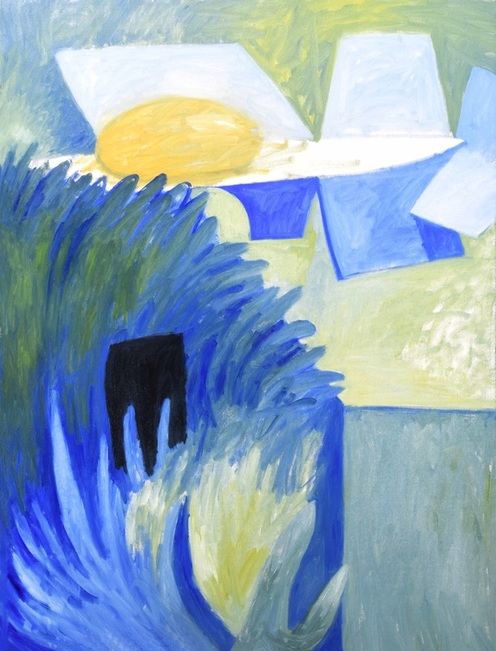









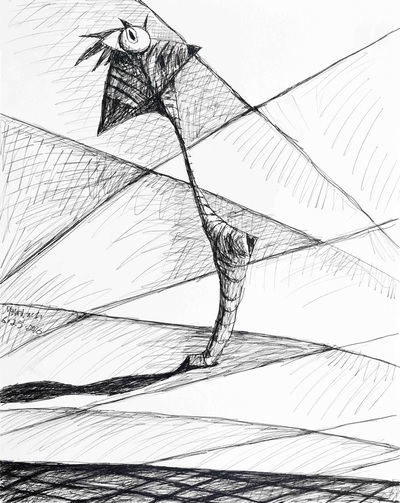


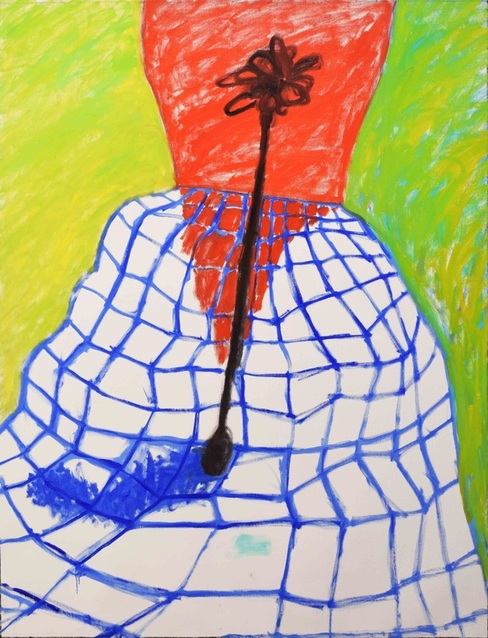











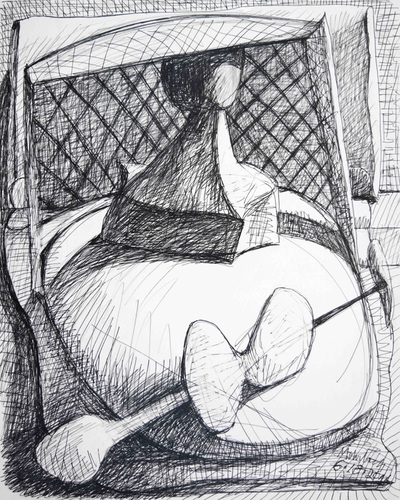
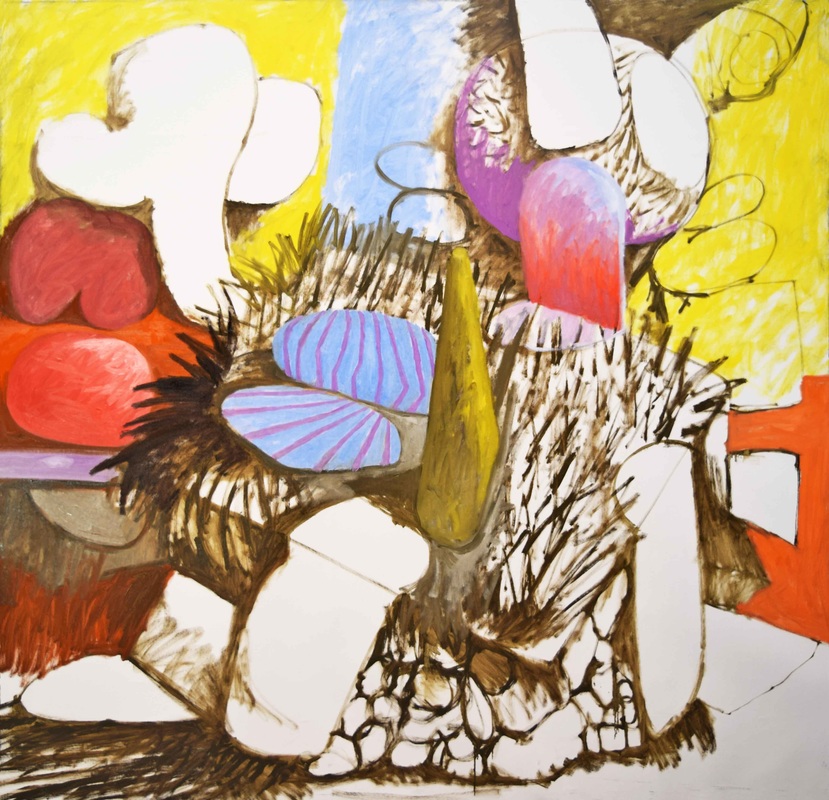




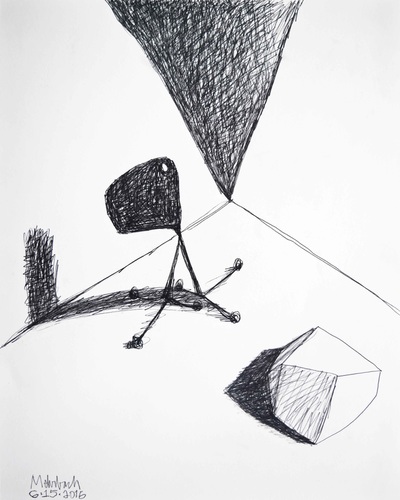



 RSS Feed
RSS Feed